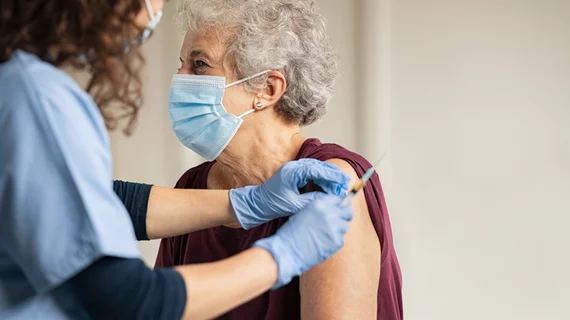US achieves 70% vaccination rate
The U.S. has achieved a 70% vaccination rate against COVID-19 among adults, according to the Centers for Disease Control and Prevention.
The milestone comes roughly one month after President Joe Biden’s July 4 goal of 70% of U.S. adults having received at least one vaccine dose. Biden set the 70% goal earlier this year in the hopes of building up herd immunity to reduce the spread of the virus.
However, COVID cases are also on the rise across the country, with nearly 35 million cases reported in the last 30 days, according to the CDC. More than 611,000 Americans have died of COVID since the start of the pandemic. The number of hospitalizations in the U.S. has grown 86% over the last 14 days, according to The New York Times on Aug. 2.
The recent resurgence of COVID-19, and more specifically the delta variant of the virus, has prompted businesses and localities to reconsider mask-wearing requirements. Louisiana Gov. John Bel Edwards reinstated the state’s mask mandate Aug. 2 a in response to rising cases and hospitalizations. Louisiana has one of the lowest vaccination rates in the nation. Just 37% of residents in the state have been fully vaccinated, while 42% have received at least one dose.
“It has never been more clear that we are in an unchecked COVID surge that, in addition to threatening the health and wellbeing of many Louisianans, also threatens the capacity of our hospitals and medical facilities to deliver care to their patients,” Edwards said in a statement. “That is simply unacceptable, and after reviewing new data from the CDC, speaking with public health advisors, and hearing from hospital leadership and the business community, I am reinstating Louisiana’s statewide mask mandate indoors, including in schools to protect our children who are too young to be vaccinated and our teachers and staff.”
One of the biggest problems with the vaccination rate across the U.S. is the uneven spread. For instance, while many areas have high vaccination rates, there are several states with rates below 50%.
“Even if America reaches 70% or 75%, if we continue to have ZIP codes and neighborhoods at 40 or 50%, they will continue to be at risk of having outbreaks and being hot spots,” Natasha Bhuyan, MD, a family physician with One Medical in Phoenix, told CNBC. “Even if we hit the 70% milestone, we can celebrate but we should celebrate it with caution.”

